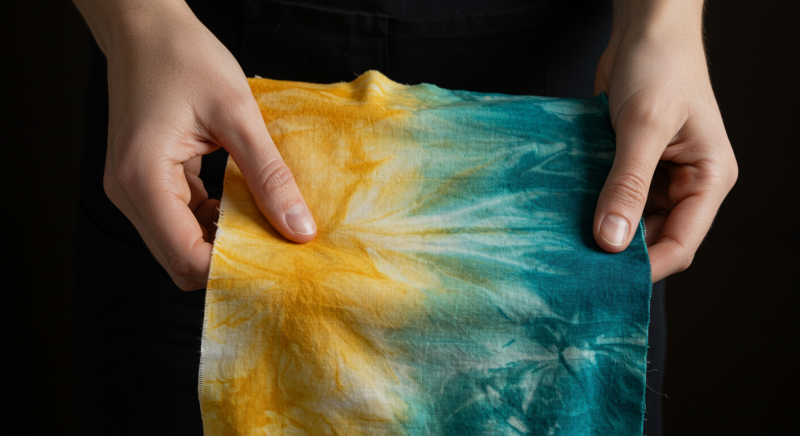The Urgency of Sustainable Fashion
The fashion industry is at a crossroads. With 10% of global carbon emissions linked to textile production and 85 million tons of clothing waste dumped annually, the planet is crying out for change. For sustainable fashion startups, this urgency isn’t just a moral imperative—it’s a golden opportunity.
Investors are increasingly channeling funds into eco-conscious ventures, with the sustainable apparel market projected to reach $18.68 billion by 2025. Yet, securing funding remains a daunting challenge. This guide blends news-driven insights and actionable steps to help you navigate the financial landscape and turn your green vision into reality.

Key Takeaways
-
Sustainable fashion startups can leverage grants, venture capital, and crowdfunding.
-
Transparency, certifications, and storytelling are critical for attracting eco-conscious investors.
-
Partnerships with NGOs and participation in climate-focused funds amplify credibility.
-
Technology like blockchain and AI-driven platforms enhances traceability and investor trust.
How to Secure Funding for Sustainable Fashion Startups: Strategies for Success
Learning how to secure funding for sustainable fashion startups requires a blend of innovation, strategic planning, and alignment with global sustainability trends. Below, we break down proven strategies to help eco-conscious brands attract investors, scale responsibly, and thrive in a competitive market—all while integrating the SEO focus keyword “how to secure funding for sustainable fashion startups” organically into the discussion.
1. Target Climate-Focused Funds and Grants
One of the most effective ways to secure funding for sustainable fashion startups is to align with climate-focused grants and blended finance initiatives. Programs like the Fashion Climate Fund allocate $250 million to brands innovating in decarbonization, circular design, or renewable energy integration. These funds prioritize startups that demonstrate measurable environmental impact, such as reducing CO2 emissions or diverting textile waste from landfills.
For example, startups using regenerative agriculture to source organic cotton or developing biodegradable dyes can qualify for grants from organizations like Textile Exchange or the Ellen MacArthur Foundation. To stand out, tie your mission to global frameworks like the UN’s Sustainable Development Goals (SDGs), which many grant providers use as eligibility criteria.
2. Partner with Impact Investors and ESG-Driven Venture Capitalists
Impact investors are pivotal for brands aiming to secure funding for sustainable fashion startups. Firms like Generation Investment Management and Green Monday Ventures specialize in backing businesses that balance profit with planetary health. These investors prioritize metrics such as carbon footprint per product, water usage efficiency, and ethical labor practices.
Aim to highlight your brand’s ESG (Environmental, Social, Governance) alignment in pitch decks. For instance, if your startup uses blockchain to ensure supply-chain transparency (learn more via Fashion for Good’s Innovation Platform) or AI to minimize overproduction, emphasize how these technologies reduce risks and enhance ROI. Case studies like Allbirds, which secured $100 million by showcasing its carbon-neutral sneakers, illustrate the power of data-driven storytelling.
3. Launch Crowdfunding Campaigns with Purpose
Crowdfunding isn’t just for pre-sales—it’s a strategic tool to secure funding for sustainable fashion startups while building a loyal customer base. Platforms like Kickstarter and Indiegogo allow eco-brands to validate market demand and raise capital simultaneously. For instance, a startup creating jackets from recycled ocean plastic could offer backers exclusive early access or limited-edition designs.
Equity crowdfunding platforms like Seedrs or Republic enable smaller investors to contribute, democratizing access to capital. Highlight how every dollar supports tangible outcomes, such as planting trees for every purchase or funding fair wages for artisans.
4. Leverage Government Incentives and University Programs
Governments and academic institutions worldwide offer grants, tax breaks, and mentorship programs to help secure funding for sustainable fashion startups. The EU’s Green Deal Initiative provides low-interest loans to businesses reducing textile waste, while the UK’s Fashion Angel supports early-stage brands with funding and industry connections.
Universities like Parsons School of Design and Central Saint Martins run incubators for sustainable fashion innovators. These programs often include access to grants, workshops, and investor networks. For example, Bethany Williams, a London-based designer, leveraged university partnerships to scale her zero-waste collections.
5. Build Credibility Through Certifications and Transparency
Investors need assurance that your sustainability claims are credible. Certifications like B Corp, GOTS (Global Organic Textile Standard), and Fair Trade act as third-party validators, reducing perceived risks. Publish annual impact reports detailing metrics like energy saved, materials recycled, or communities supported.
Technology also plays a role here. Use blockchain to trace materials from farm to garment, or adopt SaaS tools like Fairly Made to automate impact reporting. Transparency isn’t just ethical—it’s a competitive edge when learning how to secure funding for sustainable fashion startups.
6. Develop Circular Business Models
Circularity is no longer optional—it’s a magnet for investors. Startups that design resale platforms, repair services, or closed-loop recycling systems attract funding by proving long-term scalability. For example, Patagonia’s Worn Wear program generated 150millionbyrefurbishingandresellingusedgear,tappingintothebooming120 billion secondhand market.
Highlight how circular models reduce costs. Using recycled polyester saves 50% of energy compared to virgin materials, while rental services minimize inventory waste. Partner with platforms like ThredUp or The RealReal to amplify reach and credibility.
7. Forge Strategic Industry Partnerships
Collaborations with NGOs, material innovators, and industry coalitions can unlock funding and resources. The Sustainable Apparel Coalition and Fashion for Good connect startups with investors, while partnerships with tech companies like Bolt Threads (makers of mushroom-based leather) signal cutting-edge R&D.
Attend events like Global Fashion Agenda or Fashion Revolution Week to network with impact investors. Co-developing materials with bio-tech firms or joining green manufacturing consortia also strengthens your pitch.
8. Harness Storytelling to Connect with Investors
Investors fund stories as much as spreadsheets. Share narratives about your brand’s origin, ethical supply chains, or community impact. Eileen Fisher’s sustainability initiatives built trust by documenting its take-back program’s journey, while Stella McCartney emphasizes its commitment to vegan materials.
Use visuals like short documentaries or social media campaigns to humanize your mission. Highlight customer testimonials or artisan stories to showcase tangible impact—key for brands learning how to secure funding for sustainable fashion startups.

Strategies to Attract Investors to Eco-Friendly Fashion Brands
Understanding how to secure funding for sustainable fashion startups begins with positioning your brand as a credible, scalable, and innovative player in the growing green economy. Investors today prioritize ventures that balance profit with purpose, and eco-friendly fashion brands must leverage unique strategies to stand out. Below, we delve into actionable methods to attract investors.
1. Leverage Certifications to Secure Funding for Sustainable Fashion Startups
Certifications like B Corp, Global Organic Textile Standard (GOTS), and Fair Trade are non-negotiable tools for building investor trust. These credentials validate your brand’s commitment to ethical labor practices, eco-friendly materials, and reduced carbon footprints. For example, Allbirds, a pioneer in sustainable footwear, secured $100 million in funding by emphasizing its carbon-neutral supply chain and B Corp certification. Investors increasingly rely on these markers to mitigate risks and ensure alignment with ESG (Environmental, Social, Governance) criteria.
To maximize impact, publish annual sustainability reports detailing metrics like water saved per garment or emissions reduced through renewable energy. Tools like Life Cycle Assessments (LCAs) can quantify environmental benefits, providing investors with tangible proof of your brand’s positive impact.
2. Adopt Circular Models to Attract Sustainable Fashion Investors
Circular business models—such as clothing rental services, repair programs, and closed-loop recycling—are critical for brands aiming to secure funding for sustainable fashion startups. These models decouple growth from resource depletion, appealing to investors seeking long-term scalability. Patagonia’s Worn Wear initiative, which resells refurbished gear, generated 150millioninrevenuebytappingintothe120 billion secondhand apparel market.
Highlight how your circular strategy reduces costs. For instance, using recycled polyester cuts energy consumption by 50% compared to virgin materials. Partnering with resale platforms like ThredUp or Depop can also demonstrate market traction and community engagement, both of which reassure investors of your brand’s viability.
3. Align with Climate-Focused Funds and ESG Trends
The global sustainable apparel market is projected to reach $18.68 billion, driven by demand for transparency and climate action. Funds like the Fashion Climate Fund prioritize startups that innovate in decarbonization, renewable energy, or regenerative agriculture. Aligning your brand with such initiatives not only opens funding opportunities but also signals alignment with global sustainability goals like the UN’s SDGs.
To secure funding for sustainable fashion startups, target investors specializing in ESG or impact funds. Firms like Generation Investment Management and Collateral Good Ventures actively back ventures using blockchain for supply-chain transparency or AI to reduce overproduction.
4. Integrate Technology to Enhance Investor Confidence
Tech-driven solutions are pivotal for brands learning how to secure funding for sustainable fashion startups. Blockchain verifies material origins, combating greenwashing, while AI optimizes inventory to minimize waste—a $210 billion annual problem in fashion. Startups like Fairly Made use SaaS platforms to automate sustainability reporting, saving time and building investor trust.
Investors also favor brands using 3D design tools to prototype garments digitally, reducing sample waste by up to 30%. Demonstrating these efficiencies in pitch decks can set your brand apart in a competitive market.
5. Craft Stories That Resonate with Eco-Conscious Investors
Storytelling bridges the gap between sustainability and profitability. Share narratives about artisan partnerships, upcycled materials, or community-driven initiatives. Eileen Fisher’s emphasis on garment worker welfare and its take-back recycling program helped the brand build investor loyalty.
Engage customers through loyalty programs that reward eco-friendly actions, such as recycling old clothes. Collaborate with micro-influencers to amplify grassroots stories, showcasing how your brand drives social and environmental change.
6. Validate Demand with Consumer Insights
Investors need proof that consumers prioritize sustainability. Highlight data showing 85% of global shoppers prefer eco-friendly brands, with 73% of millennials willing to pay premium prices. Use crowdfunding platforms like Kickstarter to validate demand—Lemonade Dolls raised £258,000 on Seedrs by targeting eco-conscious backers.
Pre-order campaigns and partnerships with retailers like Credo Beauty or Reformation further demonstrate market readiness, a key factor in securing funding for sustainable fashion startups.
7. Build Alliances for Shared Value and Credibility
Strategic partnerships amplify credibility. Join industry coalitions like the Sustainable Apparel Coalition or collaborate with material innovators like Infinited Fiber, which transforms textile waste into new fabrics. Stella McCartney’s partnership with Bolt Threads for mushroom-based leather attracted investors by showcasing cutting-edge R&D.
Attend events like Fashion Revolution Week to network with impact investors and showcase your brand’s mission.

Conclusion: Paving the Path to a Greener Future
Securing funding for sustainable fashion startups demands creativity, persistence, and alignment with global sustainability trends. By leveraging climate funds, impact investors, and storytelling, your brand can thrive financially while driving planetary change. As consumer demand for ethical fashion grows—85% of shoppers prefer sustainable brands—innovators who act now will lead the industry’s transformation.
FAQ
Q1: What’s the best funding method for early-stage sustainable fashion startups?
A1: Crowdfunding and angel investors are ideal for seed funding. Platforms like Seedrs allow small investments from eco-conscious backers, while grants from organizations like the Ellen MacArthur Foundation can provide non-dilutive capital. Early-stage brands should also explore competitions like the Global Change Award to gain visibility and funding.
Q2: How do I prove my brand’s sustainability to investors?
A2: Certifications like B Corp or GOTS validate your claims, while third-party audits and annual impact reports add credibility. Highlight metrics such as carbon emissions reduced, water saved, or percentage of recycled materials used. Tools like Life Cycle Assessments (LCAs) can quantify your environmental impact in investor-friendly terms.
Q3: What challenges do sustainable fashion startups face?
A3: High production costs, scalability of eco-friendly materials, and risks of greenwashing accusations are common hurdles. Mitigate these by partnering with ethical suppliers, using scalable technologies like AI-driven inventory systems, and maintaining transparency in all communications.
Q4: Can technology improve my chances of securing funding?
A4: Yes. Blockchain for supply-chain transparency, AI for reducing overproduction, and 3D design tools to minimize waste are highly appealing to investors. For example, brands like Fairly Made use SaaS platforms to automate sustainability reporting, saving time and building trust.
Q5: How long does it typically take to secure funding?
A5: The timeline varies, but early-stage startups often spend 6–12 months building relationships with investors. Grants may take 3–6 months to process, while equity crowdfunding campaigns can wrap up in 30–90 days. Persistence and a polished pitch deck are critical.
Q6: What are common mistakes startups make when seeking funding?
A6: Overlooking due diligence on investors, failing to align with ESG criteria, and neglecting to quantify impact are frequent missteps. Avoid vague claims like “eco-friendly” without data—investors want specifics, such as “reduced carbon footprint by 40% using renewable energy.”
Q7: Can non-profit sustainable fashion brands attract investors?
A7: While non-profits may struggle with traditional equity investors, they can secure grants, corporate sponsorships, or donations from impact-focused organizations. Platforms like Eco-Age or Fashion Revolution often support non-profit initiatives aligned with systemic change.
Q8: How do I balance sustainability with investor demands for high returns?
A8: Emphasize *long-term value creation*. For example, circular models (e.g., resale programs) generate recurring revenue, while sustainable practices reduce regulatory risks. Showcase consumer trends, like 73% of millennials willing to pay more for ethical brands, to justify pricing strategies.
Q9: Are certain regions better for securing sustainable fashion funding?
A9: Europe leads with initiatives like the EU’s Green Deal, while cities like Amsterdam and Copenhagen host impact investor networks. The U.S. offers opportunities through SBIR grants and venture firms like Closed Loop Partners. Asia’s growing market, particularly Japan and South Korea, also prioritizes eco-innovation.
Q10: What documentation is essential for pitching to investors?
A10: A robust pitch deck should include:
-
Financial projections with ROI timelines.
-
Impact metrics (e.g., tons of textile waste diverted).
-
Market validation (pre-orders, partnerships).
-
Certifications and supply-chain maps.
-
A clear explanation of how you’ll scale sustainably.
Q11: How do accelerators help secure funding?
A11: Accelerators like Fashion for Good or Techstars provide mentorship, networking, and demo days to connect startups with investors. For example, Reformation scaled through accelerator support before becoming a household name.
Q12: How can I handle concerns about higher costs of sustainable materials?
A12: Highlight cost-saving innovations, such as using deadstock fabrics or partnering with material recyclers like Evrnu. Investors appreciate strategies that offset expenses, such as premium pricing or loyalty programs that boost customer lifetime value.
Q13: What’s the difference between crowdfunding and venture capital?
A13: Crowdfunding builds community engagement and validates market demand quickly, while venture capital offers larger sums and strategic mentorship. Hybrid approaches, like using Kickstarter to attract VC attention, are increasingly common.
Q14: What steps should I take after securing funding?
A14: Prioritize transparency with investors through regular updates. Reinvest capital into R&D (e.g., biodegradable materials) or scaling production ethically. Leverage partnerships, like Patagonia’s collaboration with Fair Trade USA, to strengthen credibility.
Q15: How do I measure environmental impact effectively?
A15: Use frameworks like the Science-Based Targets Initiative (SBTi) or the Higg Index to track progress. Tools like OpenLCA can automate data collection, making it easier to report outcomes to stakeholders.
READ MORE
